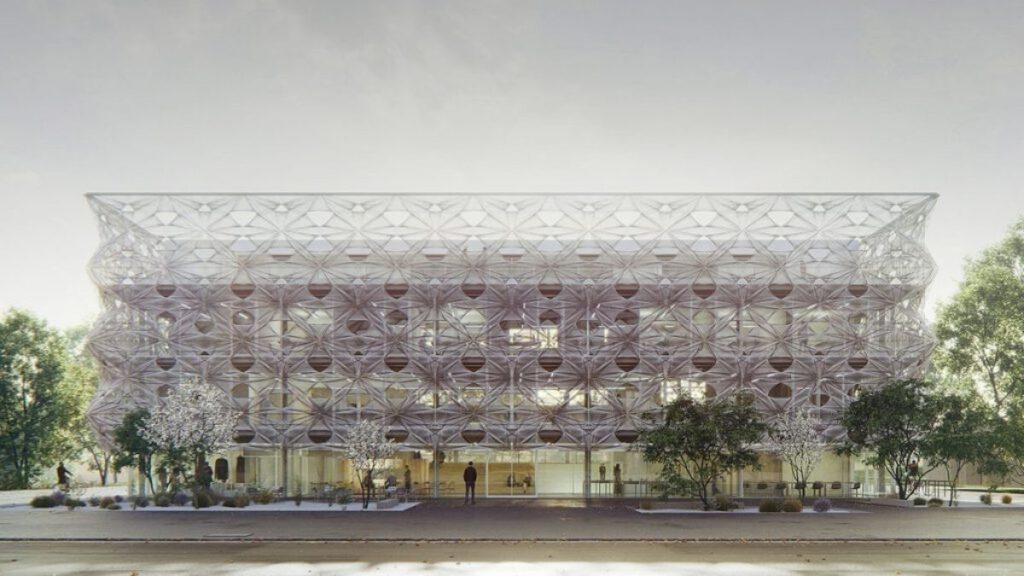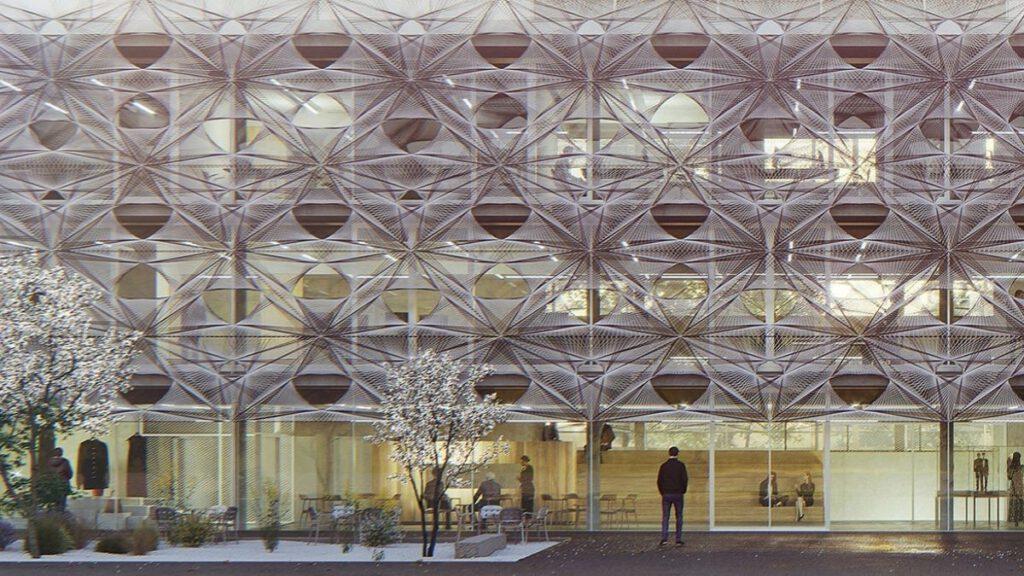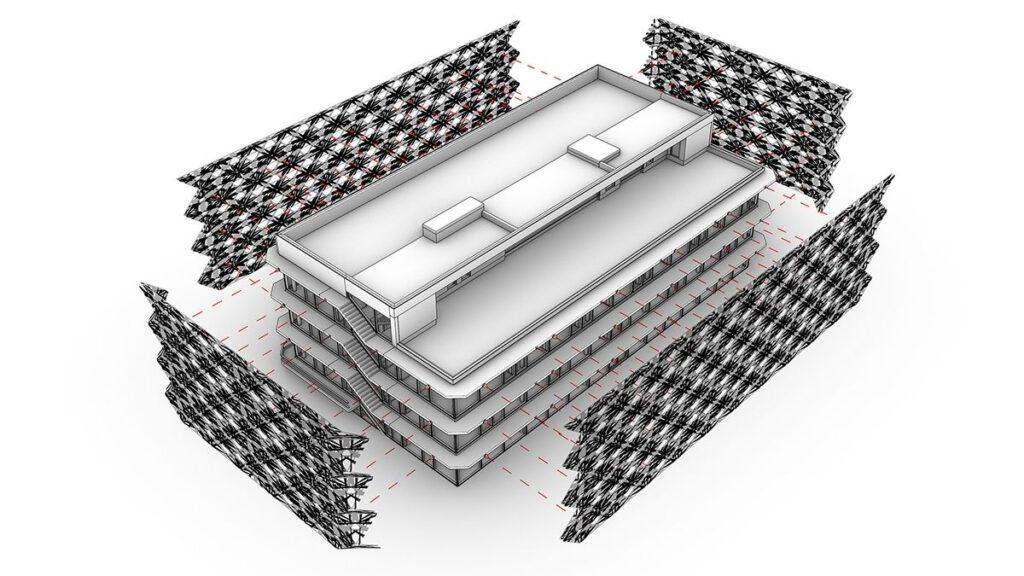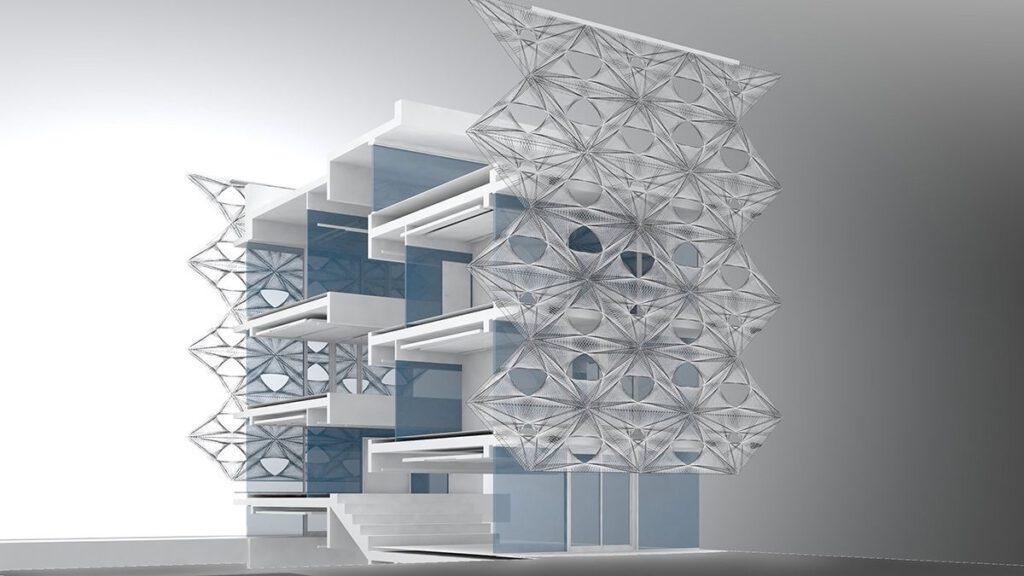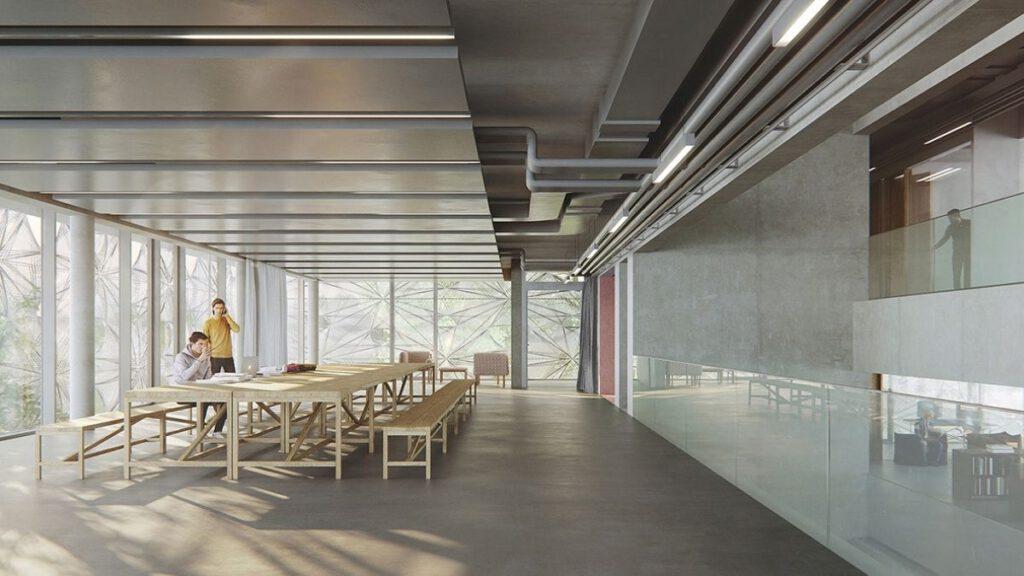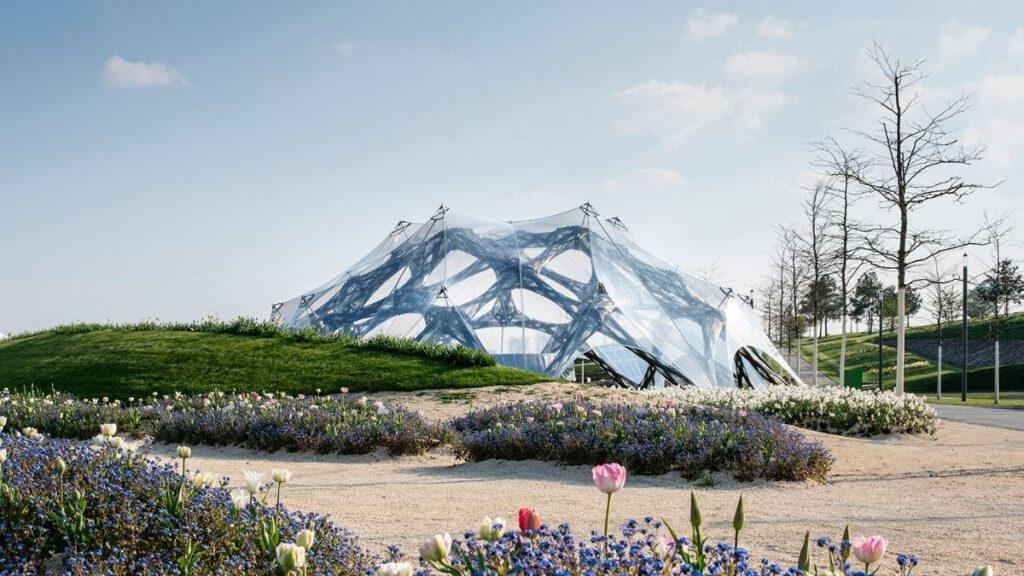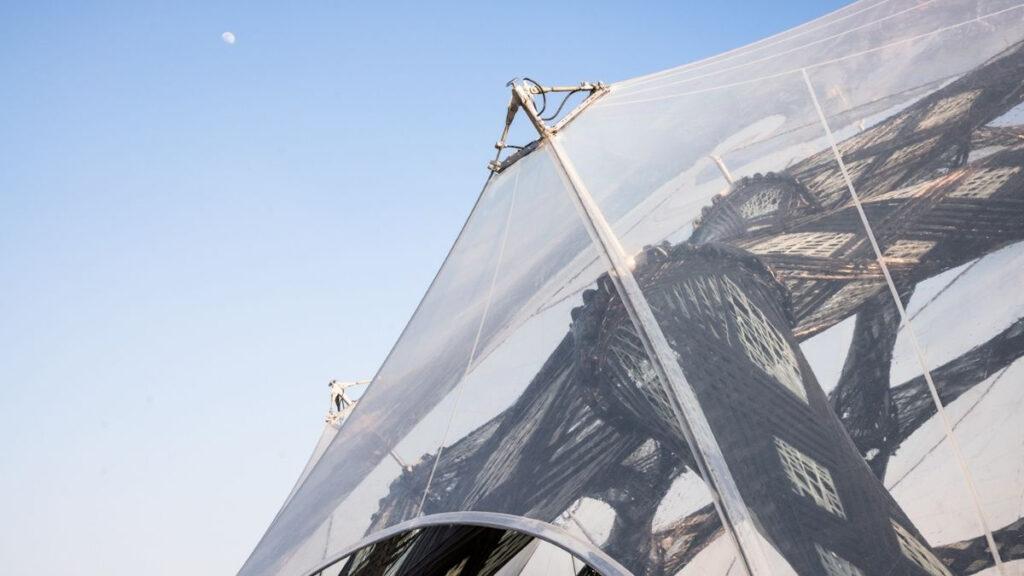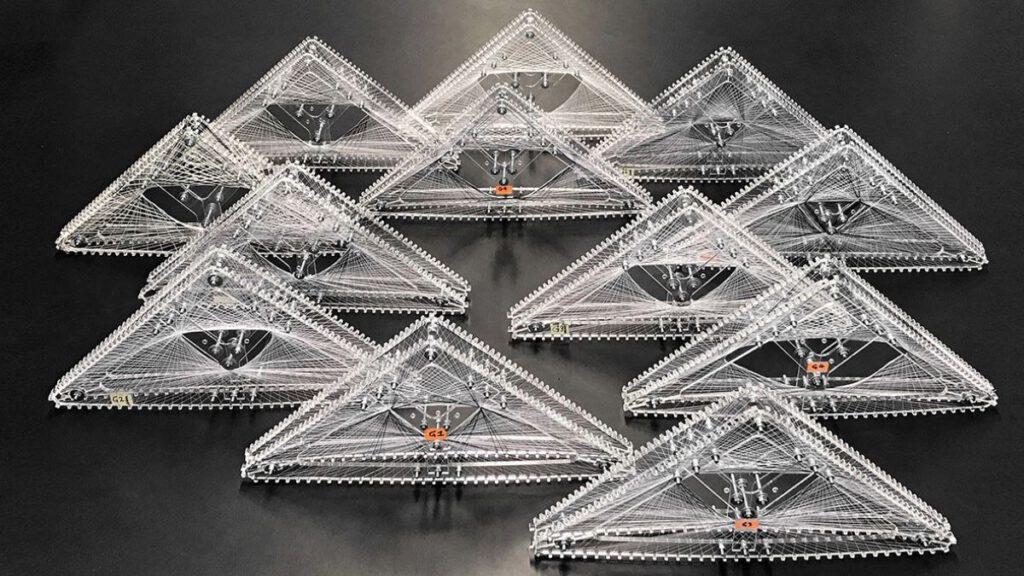Cocooned in textiles
With its textile facade made of carbon fibre, Germany’s Texoversum is a showcase for textiles as a general purpose technology.
Textile research inside and out: at the new building on the campus of Reutlingen University, specialist architecture firms and experts are working as a team to create a facade made of carbon and glass fibres. This makes the Texoversum both a showcase and also an education, research and innovation centre for textiles as a general purpose technology. The building is sponsored by the Südwesttextil (South West Textile) employers’ association.
The architectural concept by the trio of Allmann Sattler Wappner Architekten, Menges Scheffler Architekten and Jan Knippers Ingenieure is based on a multifaceted approach to the notion of building with textiles. The design theme is reflected both structurally in the internal interweaving of functions and in the signature building envelope.
Robotic winding process with carbon fibre
The unique facade made of carbon and glass fibres is, according to its inventors, “the first of its kind to be implemented in this way, representing the innovative power and future viability of fibre-based materials and textile techniques”. A robotic winding process allows every single facade element to be individually adapted to meet its usage requirements.
As the sun travels across the sky, the three basic modules with the exterior elements are transformed and assume a multi-layered appearance. They are completely self-supporting, and their staggered arrangement affords unobstructed views. The focus, however, is on the aspect of resource-efficient architecture.
A split-level building
The elements made of fibre-based materials appear delicate yet resilient. In addition to functional requirements such as providing external shading and fall guard protection, the facade serves as an aesthetic and distinctive source of inspiration for using textile technology in construction.
The design theme of permeability and interconnectedness is reflected in the concept of the building on the edge of the Reutlingen campus. The Texoversum has an inner structure that is designed as an open, transparent building with split levels. In contrast to conventional buildings, a split-level structure is not divided into distinct floors. Instead, the levels are offset from each other by half a storey and typically connected by open staircases.
Communicative
The building’s design fosters a collective and communicative working atmosphere for the various user groups. The half-storey, staggered levels in the Texoversum connect the different areas of use. They form a spatial, flowing continuum that culminates in a spacious roof terrace.
Until now, this type of textile facade has only been used in supporting structures for pavilions. One example of this is the pavilion of the institutes headed by Achim Menges (ICD) and Jan Knippers (ITKE) at the University of Stuttgart, erected at the German National Garden Show in Heilbronn in 2019. There, too, a robotic fabrication process was used to produce the supporting structure made of glass and carbon fibres.
The Texoversum has a robust, industrial character, with industrial screed, polished concrete surfaces and ceilings with exposed conduits.
Design team: Allmann Sattler Wappner Architekten GmbH, Munich; Menges Scheffler Architekten PartG mbh, Frankfurt; Jan Knippers Ingenieure, Stuttgart;
Structural engineering: bwp Burggraf + Reiminger Beratende Ingenieure GmbH, Munich; Jan Knippers Ingenieure, Stuttgart;
Project management: Kubus360 GmbH, Stuttgart;
Landscape architecture: Glück Landschaftsarchitektur GmbH, Stuttgart;
Fibre composite facade: FibR GmbH, Kernen (fabrication)
Think-tank spaces
The Texoversum is scheduled to open its doors in autumn 2022. It is intended to serve as an innovation centre and a forum for the exchange of ideas among professionals – not just for students, developers and researchers, but also for companies, business founders and investors.
With nearly 3,000 square metres of floor space, the Texoversum will house studios, laboratories, Reutlingen University’s internationally renowned collection of historical fabric and textile specimens, multifunctional spaces for research and development, and diverse classrooms.
Bodo Th. Bölzle, President of Südwesttextil, envisions the Texoversum as a “hybrid workshop for the future”. The think tank is also intended to serve as a magnet for trend scouts and developers from other technological sectors (automotive, aerospace, medical technology, etc.).
Text: Linda Benkö
Translation: Rosemary Bridger-Lippe
Renderings: Grauwald Studio Berlin / Allmann Sattler Wappner Architekten, Menges Scheffler Architekten, Jan Knippers Ingenieure
